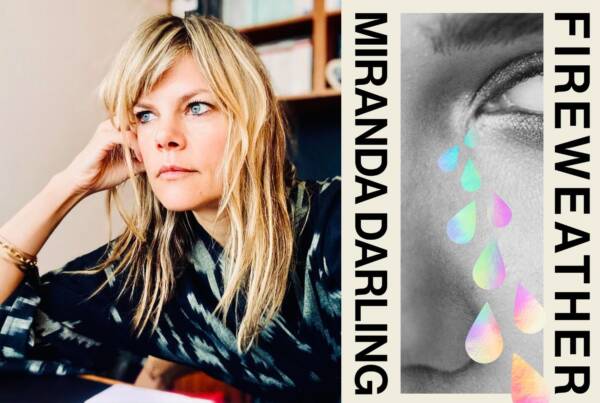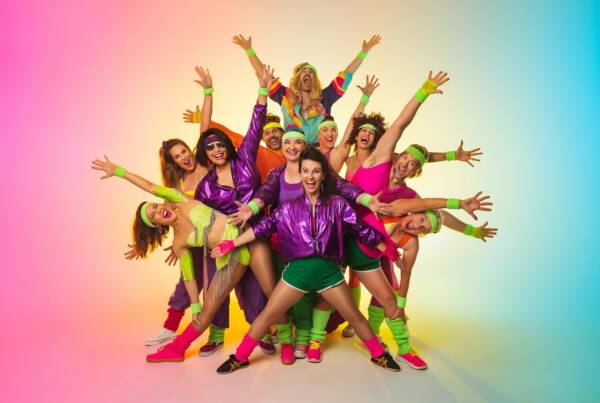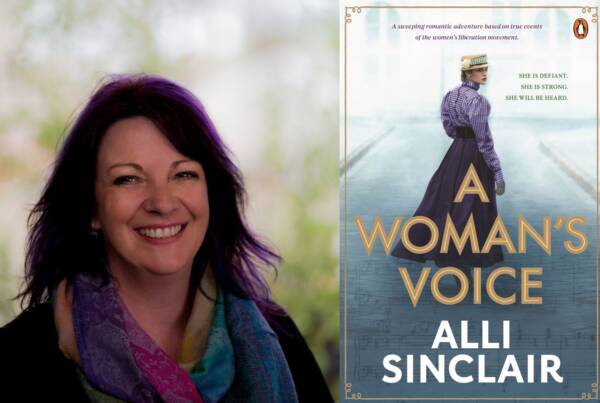Words by Holly Cardamone
It’s time for me to confess, some twenty years late: I feel a little ripped off by some of the classes in my Master’s of Writing and Literature program. I’m specifically talking about the fiction unit. I did a whole year of fiction writing, where the only genre that was covered was literary fiction. Or, should I say, Literary Fiction. Capital L. Capital F. Don’t get me wrong: it was excellent by all standards and measures and I loved every minute. The program covered everything from structure and point of view, settings and characterisation, plot and literary devices, but it was almost universally in the context of literary fiction. Oops, sorry, I did it again. Literary Fiction.
Now, don’t get me wrong. I’m a sucker for a Booker longlister too. I love a deep naval gaze, but what I resent is the invisible (and sometimes overt) snobbery about other forms of literature, other genres that inspire and delight, challenge and explore, AND, let’s face it, actually fly off bookshelves. In that unit, it felt like reading anything commercial was a dirty secret, so I can only imagine what it felt like for the students who were writing it.
There was one exception: Young Adult fiction.
I’ve thought a lot about that over the years, even before I was writing my own YA novels, about the ‘why’ of this. Maybe it’s because there are whole categories in respected, well-known awards dedicated purely to YA fiction. Maybe because it doesn’t have a lot of the same reader conventions that more commercial genres adhere to. There’s no required Happily Ever After or Happy For Now, which is a non-negotiable in romance. There’s no dead body and no mystery resolution like in thrillers or crime novels. It can explore deeper themes- in fact, that’s a prerequisite. The only ‘rule’ is the protagonist being a young person on the cusp between adolescence and adulthood. AKA the hellscape, yet also such an exciting place to be.
Transitions, both the ones we’ve sought and the ones that are thrust upon us, are always places of exhilaration.
I’ve always loved Young Adult fiction. I loved it as a pre-pubescent and as an adolescent. I read titles like The Outsiders, Dicey’s Song, Bridge to Terabithia, Forever and Deenie (by Judy Blume, but of course) until the covers were almost falling off. There was also a fair bit of Sweet Valley High in the mix too, along with a Flowers in the Attic that got handed around my friendship group, sneakily, because we knew that some of the mothers wouldn’t approve.
These books were an escape for a nerdy bookworm who lived on a farm in a tiny coastal hamlet that just didn’t seem to fit. They were my survival guide to the awkward rollercoaster of adolescence and were like a blueprint to who I wanted to be against who I actually was.
Adolescence is intoxicating, thrilling, compelling and at times, terrifying. It’s such a transformative, exciting and challenging time. It’s full of conflict and self-discovery and firsts, so many firsts. These firsts are what lead to the aforementioned awkwardness, as well as misguidedness and misunderstandings. Pair that with the intensity of feelings and emotions and we’re in for one hell of a quagmire.
It’s all of this good stuff that Summer, in Between explores. Cat, my protagonist, like all seventeen-year-olds on the balance beam between teenagerdom and womanhood, faces some fairly heavy concerns. She’s navigating misogyny, identity and staying true to herself. However, she’s also falling in love, despite herself, with all the lightness and joy that comes with that.
It’s this lightness that makes Young Adult literature a constant in my reading. But it’s more than that. There’s a reason that when you think about the books that you felt the most, that changed your life, they’re from your adolescence.
I am rescuing her from teenage hell. Do you know the wounds from adolescence can take years to heal? Cher Horowitz in the film Clueless
There’s a psychological phenomena that I stumbled upon: the reminiscence bump. Basically, it says that the experiences that adults remember most vividly are those that occurred between 15 and 25 years of age, aka when they were young adults.
Who doesn’t remember a humiliating high school scene that even now, thinking about it gives a visceral response? I remember the feeling of my face draining of colour when I found out, in assembly, a place I couldn’t hide, that at a party I hadn’t been invited to, a so-called friend kissed my crush. Ugh, the horror! The betrayal! The drama of what felt like hundreds of people staring at me, trying to gauge my reaction. A marker of young people is their distorted view of their social world. As an adult, I know that generally everybody’s too busy with their own stuff to notice mine in this context, but as an adolescent I didn’t, couldn’t see that.
Of course, what I’m talking about here is shame, and according to Brené Brown (and ain’t nobody dare argue with Brené) the impact of shame can be unwanted identities and labels. Get this: 90% of this starts in the time of tweens and teens, leaving them feeling unworthy of acceptance and unlovable. Imagine navigating that feeling every day in adolescence?
Here’s some psycho-babble that I’m paraphrasing really badly:
Just before adolescence, the prefrontal cortex part of the brain (which takes care of our ability to reason, grasp abstractions, control impulses and self-reflect) has a massive flurry of activity. This gives a young person the intellectual capacity to form an identity and develop a notion of themselves. Capacity is just the first part of the process. You see, at the same time, the prefrontal cortex is still developing. It’s still mucking around with myelin that speeds up the neural connections. The more primitive, emotional parts of the brain are leading the way, which means there’s poor self-regulation and dramatics galore.
You know what else is happening? Teens are also simply buzzing with dopamine more than at any other time (which is why the minds behind social media are so, so diabolical), so everything they do and feel is intense. So intense!
It’s that intensity that leads to fabulous young adult literature, the kind that feels like a nostalgic trip, thanks to the reminiscence bump. I’m sure it’s the reason that a 2024 review of reading found that 28% of YA readers are over the age of 25. Here’s what a reviewer (an adult reader) said about my novel:
It’s a portal into your own experience of first love, except the love interest, the protagonist’s family, and the setting are better than yours were.
What do I personally love about Young Adult fiction? No matter what tangled web the teen finds themselves in, their story shows a way out, that their coming of age is like that tired, old metaphor (but no less evocative or apt) of the butterfly emerging from the chrysalis.
If literature, or reading more generally is about experience, and transformation, then what could be more transformative than a good coming of age story? I’m so thrilled that mine will be in the hands of readers that could use it as their own awkwardness and angst survival guide.






